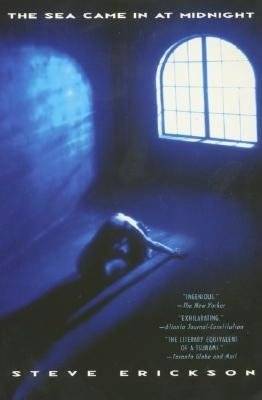

The Sea Came in at Midnight
by Steve Erickson
God invented millennia for writers like Steve Erickson. Erickson's previous books have buried L.A.'s freeways in sand, set bonfires in Paris streets, and hitched along for the 1996 presidential campaign. In terms of madness, doom, and sheer human folly, what could possibly be left? Plenty, as it turns out. As The Sea Came in at Midnight opens, 17-year-old Kristin works in a Japanese "memory hotel," where despite her so-so looks she's in high demand. As an American, "Kristin represents the Western annihilation of ancient Japanese memory and therefore its master and possessor, a red bomb in one hand, a red bottle of soda pop in the other." After one of her best clients expires in the booth, she finally tells him her own story--which turns out to be quite a tale, involving escape from a millennial suicide cult and nude solitary confinement at the behest of a man known only as the Occupant. Add in the novel's other threads, which span 40 years and include a dream cartographer, a chaos-based calendar, time capsules, and both real and faked snuff films, and you have a heady mixture indeed. Fans of Erickson's unsettling, dreamlike style are legion, and they won't be disappointed in his latest take on the End Time, Blade Runner-style. But in a way, the millennium is beside the point; with a plot like this one, a mere flipping of digits seems so much apocalyptic icing on the cake. Combing a lyrical surrealism with a jittery, jump-cut technique, Erickson writes like the 21st-century heir of Pynchon and DeLillo. --Chloe Byrne
Release Date:
April 30, 2000

